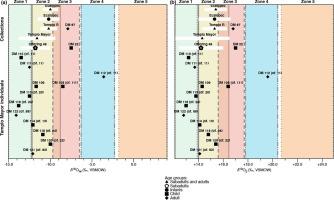Journal of Anthropological Archaeology ( IF 2.0 ) Pub Date : 2021-04-13 , DOI: 10.1016/j.jaa.2021.101296 Diana K. Moreiras Reynaga , Jean-François Millaire , Ximena Chávez Balderas , Juan A. Román Berrelleza , Leonardo López Luján , Fred J. Longstaffe

|
This is the first systematic study of residential patterns of Mexica human sacrifices, as determined from bone and enamel phosphate oxygen isotope data of individuals recovered at the Templo Mayor of Tenochtitlan (n = 36) and the Templo R of Tlatelolco (n = 24). We identify these individuals’ geographic residences and compare these patterns with phosphate oxygen isotope data from a contemporary non-sacrificial group (Ecatepec; n = 24) from the Basin of Mexico. The sacrifices’ residential patterns are evaluated to assess their group membership (i.e., as locals, long-term residents, or non-locals from other regions of Mesoamerica). The Tlatelolco subadult and adult sacrifices were either locals or long-term residents. The Templo Mayor subadult sacrifices offered at several ceremonies were non-locals and long-term residents, while the adult sacrifices were long-term residents (e.g., slaves living in Tenochtitlan >10 yrs.) or non-locals (e.g., war captives, slaves, spoils-of-war sacrificed soon after arriving to the Basin). Our results demonstrate the Templo Mayor priests had broad access to long-term residents and non-locals with origins from Mesoamerican regions subjugated by the Mexica. This study illustrates the Mexica obtained individuals for sacrifice with a diverse range of physical, social, and geographic characteristics for their ritual ceremonies.
中文翻译:

墨西哥-特诺克蒂特兰和墨西哥-特拉特洛尔科的墨西哥人献祭的居住模式:来自磷酸盐氧同位素的证据
这是对墨西哥人牺牲的居住模式的首次系统研究,根据在Tenochtitlan的Templo市长(n = 36)和Tlatelolco的Templo R(n = 24)恢复的个体的骨骼和牙釉质的磷酸氧同位素数据确定。我们确定了这些人的地理住所,并将这些模式与当代非牺牲人群的磷酸盐氧同位素数据进行了比较(Ecatepec;n = 24)来自墨西哥盆地。对牺牲者的居住模式进行评估,以评估其团体成员身份(即,当地居民,长期居民或中美洲其他地区的非本地人)。特拉特洛尔科的亚成人和成年牺牲者是当地人或长期居民。在几个仪式上提供的圣殿市长亚成人祭祀是非本地人和长期居民,而成人祭祀则是长期居民(例如,居住在Tenochtitlan的奴隶大于10岁)或非本地人(例如,战俘,奴隶,到达战区后不久就牺牲了战利品)。我们的结果表明,Templo市长的牧师可以长期接触长期居民和非本地人,这些居民来自墨西哥受墨西哥侵占的中美洲地区。











































 京公网安备 11010802027423号
京公网安备 11010802027423号